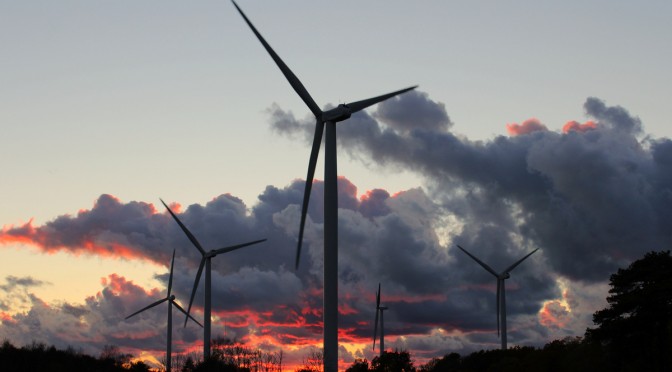Shetland’s second wind farm should be operating within two years after the North Yell Development Council was granted a grid connection for their five turbine project near Cullivoe.
The news emerged as Scottish and Southern Energy chief executive Ian Marchant breezed through Shetland on his farewell tour of Scotland as he prepares to leave his post after 11 years.
It has been a decade since the NYDC started working on their plans to use renewables to generate an income for one of Shetland’s most remote communities.
As well as the 4.5 megawatt wind farm, the organisation is planning to deploy the world’s first community tidal generator later this year, which will be much smaller at 30 kilowatts – “the equivalent of 10 kettles”.
The Yell grid connection has only been made possible by SSE’s ground breaking NINES smart grid project, which involves the latest generation of Dimplex storage heaters being installed in a range of social housing owned by Hjaltland Housing Association.
The group had previously been told that they would have to wait until an interconnector was built to export electricity from the planned Viking Energy wind farm, which will not happen before 2018.
NYDC now has to borrow £6 million from banks to build the wind farm, with the grid connection approved for activation in May 2015.
The group has already spent £300,000 on the project, half of which was borrowed from Community Energy Scotland with the rest grant funded from the council, HIE and CES.
The group has been helped along the way by the good will of the community and others, including consultants who carried out otter and bird surveys more or less without charge.
NYDC chairman Robert Henderson said that the wind farm should generate an income of £1.3 million a year for the 300 people who live between Basta Voe and Gloup.
“We would like to see the money used for supporting the local school, and supporting young couples needing to build houses where we could lend them money on preferential terms and allow them to build within the community,” he said.
“My reaction is euphoria. This is something we thought would never happen. It feels like winning the lottery.”
Project manager Colin Dickie added that the income could increase to almost £2 million a year if the Viking Energy interconnector is built.
He said two banks had already expressed an interest in investing in the project.
Meanwhile SSE chief Ian Marchant told a gathering of businessmen and women in Lerwick on Tuesday afternoon that he was more confident the Viking Energy wind farm would be built after the government made a policy commitment on transmission charges two weeks ago.
In an announcement that passed most people by, the government said that it was committed to providing more support for island-based onshore wind farms, which were cheaper to operate than offshore wind farms while generating the same amount of electricity.
Marchant said the wind farm depended on the government delivering on its policy commitment, and after 11 years in the job he would not be holding his breath.
“All I will say is that it will happen before the first UK nuclear power station is built in 2020,” he said.
“We are targeting 2018, but the timing of this is not in the hands of anyone in this room.”
If the wind farm is built, Shetland can look forward to being one of the world’s first zero carbon communities, he said, with fossil fuel free heating, transport and power generation.
He added that SSE wanted to make it as easy as possible for Shetland companies to tender for work for the three big projects they have planned over the next few years – a new power station, a converter station for Viking Energy, and the wind farm itself.
He added that the greatest benefit for the islands could be Shetland being able to export the expertise that it builds up from running the wind farm and the spin offs that it provides.
However he warned that commercial wave and tidal developments were at least 10 years away.


